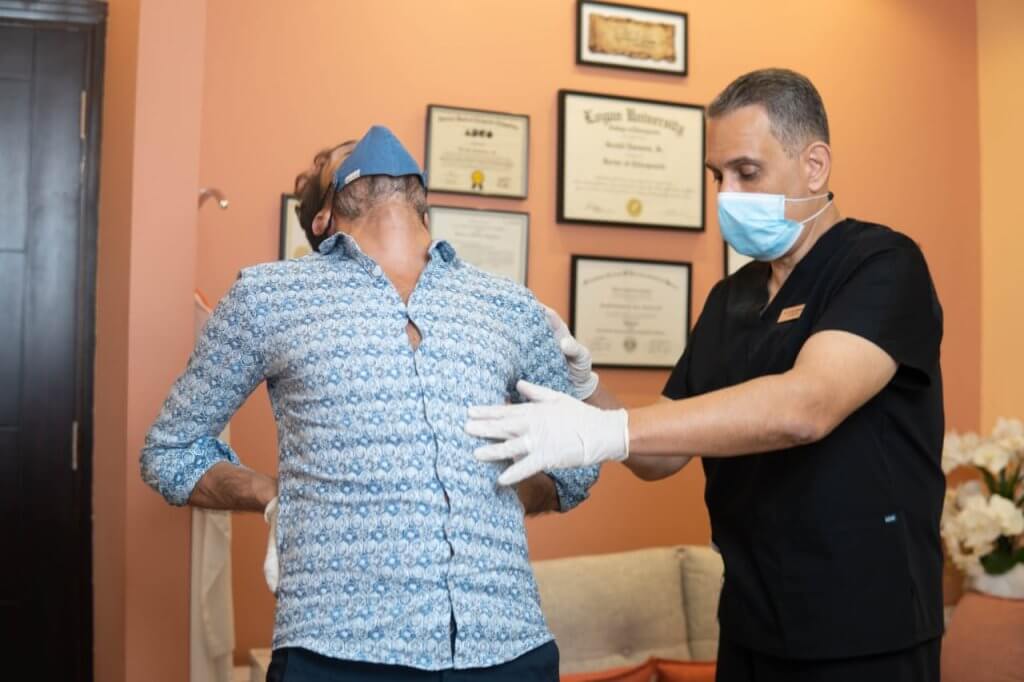Understanding Lower Back Pain: A Complete Treatment Guide

Lower back pain affects millions globally, becoming one of the leading causes of disability worldwide. This comprehensive guide will help you understand, manage, and treat lower back pain effectively.
Why Your Lower Back Pain Isn’t Just “Getting Old”
Lower back pain isn’t simply a natural part of aging. Studies show that 80% of adults experience significant back pain at some point, but age isn’t the primary culprit. The misconception that back pain is inevitable with age often prevents people from seeking appropriate treatment.
Modern lifestyles contribute significantly to back pain:
- Extended periods of sitting
- Increased screen time
- Reduced physical activity
- Poor postural habits
These factors affect people of all ages, making it crucial to understand that back pain is often preventable and treatable.
Hidden Triggers: What’s Really Causing Your Back Pain
Several factors contribute to lower back pain beyond obvious injuries:
Sedentary Lifestyle Impact Your body needs regular movement to maintain healthy spine function. Prolonged sitting creates muscle imbalances, weakens core muscles, and increases pressure on spinal discs.
Postural Stress Poor posture during daily activities places excessive strain on your lower back. Common issues include:
- Forward head posture
- Rounded shoulders
- Anterior pelvic tilt
- Uneven weight distribution
Underlying Conditions Medical conditions that may cause or contribute to back pain include:
- Herniated discs
- Spinal stenosis
- Degenerative disc disease
- Fibromyalgia
- Arthritis
The Warning Signs: When Back Pain Needs Medical Attention
While many cases of lower back pain resolve independently, certain symptoms warrant immediate medical attention:
Red Flags:
- Pain accompanied by fever
- Unexplained weight loss
- Loss of bladder or bowel control
- Progressive leg weakness
- Pain that worsens at night or with rest
The Science Behind Lower Back Pain
Understanding the anatomy helps explain why lower back pain occurs and how to treat it effectively.
The lower back consists of:
- Five lumbar vertebrae
- Intervertebral discs
- Facet joints
- Complex network of nerves
- Supporting muscles and ligaments
Pain typically originates from:
- Muscle strain or spasm
- Ligament sprain
- Nerve compression
- Joint dysfunction
- Disc problems
Types of Lower Back Pain You Need to Know
Acute Pain
- Sudden onset
- Typically lasts less than 6 weeks
- Often related to specific injury or movement
- Generally responds well to conservative treatment
Chronic Pain
- Persists beyond 12 weeks
- May require comprehensive treatment approach
- Often involves multiple pain mechanisms
- Can have significant psychological impact
Mechanical Pain
- Movement-related
- Improves with certain positions
- Worsens with specific activities
- Often responds to physical therapy
Your Complete Lower Back Pain Treatment Toolkit
Treatment should be tailored to your specific condition and symptoms. A comprehensive approach typically includes:
Immediate Relief: First-Aid for Lower Back Pain
Heat and Ice Therapy
- Ice for acute injuries (first 24-48 hours)
- Heat for chronic pain and muscle tension
- 15-20 minute applications
- Protection against skin damage
Medication Options
- NSAIDs for pain and inflammation
- Acetaminophen for pain relief
- Muscle relaxants when appropriate
- Topical treatments
Movement Medicine: Exercises That Actually Help
Exercise is crucial for recovery and prevention. Key components include:
Core Strengthening
- Planks and modifications
- Bird-dog exercise
- Dead bug progression
- Bridges and variations
Flexibility Work
- Gentle stretching
- Hip mobility exercises
- Hamstring flexibility
- Lower back mobility
Progressive Programming
- Start with pain-free movements
- Gradually increase intensity
- Focus on functional patterns
- Include cardiovascular exercise
Professional Interventions Worth Considering
Physical Therapy Benefits
- Targeted exercise prescription
- Manual therapy techniques
- Posture education
- Movement pattern correction
Advanced Treatment Options
- Spinal manipulation
- Dry needling
- Therapeutic ultrasound
- Electrical stimulation
Lifestyle Changes That Combat Lower Back Pain
Long-term success requires addressing daily habits:
Ergonomic Improvements
- Proper workstation setup
- Ergonomic chair selection
- Monitor height adjustment
- Regular movement breaks
Sleep Optimization
- Supportive mattress
- Proper pillow selection
- Optimal sleep positions
- Sleep hygiene practices
The Mind-Body Connection in Pain Management
Chronic pain management must address psychological factors:
Stress Management
- Deep breathing exercises
- Progressive muscle relaxation
- Mindfulness practices
- Stress reduction techniques
Mental Health Support
- Cognitive behavioral therapy
- Pain coping strategies
- Depression and anxiety management
- Social support systems
Alternative Therapies for Lower Back Pain Relief
Complementary approaches can be valuable additions to traditional treatment:
Evidence-Based Options
- Acupuncture
- Yoga therapy
- Tai Chi
- Mindfulness meditation
Natural Remedies
- Anti-inflammatory foods
- Supplements (consult healthcare provider)
- Herbal remedies
- Lifestyle modifications
Building Your Support System
Success requires a comprehensive support network:
Healthcare Team
- Primary care physician
- Physical therapist
- Pain specialist when needed
- Mental health professional
Daily Support
- Family education
- Workplace accommodations
- Activity modifications
- Regular exercise routine
Recovery Timeline and Expectations
Understanding the recovery process helps maintain motivation:
Typical Progress
- Acute phase (0-6 weeks)
- Sub-acute phase (6-12 weeks)
- Chronic phase (beyond 12 weeks)
- Ongoing management strategies
Success Metrics
- Pain reduction
- Functional improvement
- Return to activities
- Quality of life enhancement
By following this comprehensive approach to lower back pain management, most people can achieve significant improvement in their symptoms and return to their desired activities. Remember that recovery is often a journey rather than a quick fix, and patience with the process is essential for long-term success.
